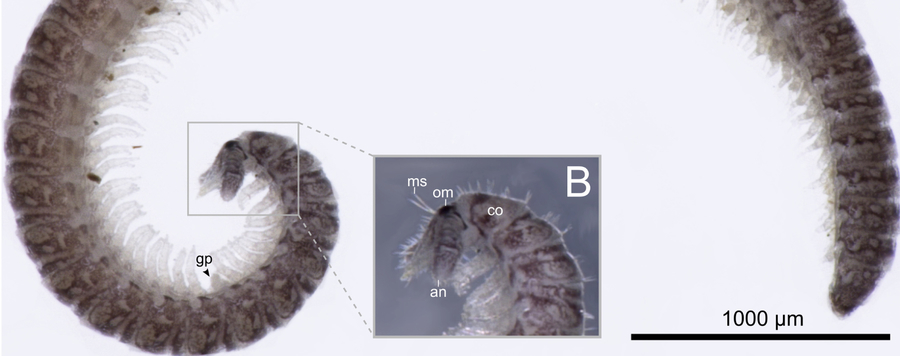
The first Indian Polyzoniida
Considering the large area of the Indian subcontinent, its known millipede diversity is sparse with only ca. 270 described species in 90 genera, 25 families and 11 orders. So far, not a single polyzoniidan millipede has been described from India. The order Polyzoniida Cook, 1895 is one of the most species-poor millipede groups with less than 80 described species, and includes taxonomically problematic groups, especially in the family Siphonotidae Cook, 1895. Here we report the first representatives of the order Polyzoniida from India, and describe the new genus Theratta n. gen., with the three species Theratta mannavan n. sp., Theratta eravikulam n. sp., and Theratta shola n. sp., using scanning electron microscopy and COI genetic barcoding. Based on the morphological characters we place Theratta n. gen., and the three new species in the tribe Rhinotini Hoffman, 1977 of the family Siphonotidae. The gonopods of the new genus are similar to those of the genus Rhinotus Cook, 1896, but differ from all other Rhinotini in the modification of the podomere II of the anterior telopod, carrying a mesal process on the posterior side and a lamellar process on the anterior side. The three newly described species show a high interspecific genetic distance of 20.9–25.3%. The specimens were collected from the Shola forests (high altitude montane forests) of the southern Western Ghats in Kerala, India. We suggest that more extensive sampling in this area and in the Indian subcontinent in general will yield more new millipede species for science and expand our understanding of the hitherto neglected Indian millipede fauna.






